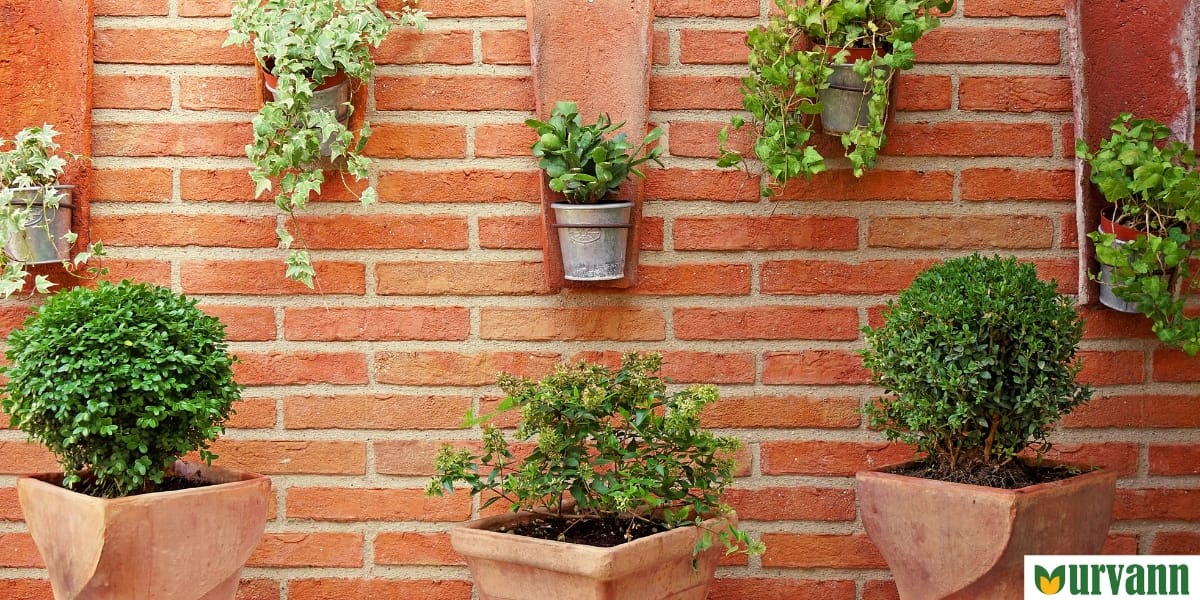In a world where outdoor space is often limited, vertical gardening offers a creative and practical solution for bringing greenery into urban environments, small yards, balconies, and even indoor spaces. Vertical gardening, also known as vertical farming or green walls, involves growing plants vertically instead of horizontally, utilizing walls, trellises, containers, and other structures to maximize growing space. In this blog, we'll explore the beauty and benefits of vertical gardening, along with tips for creating your vertical garden oasis.
MAXIMIZING SPACE EFFICIENCY
One of the primary advantages of vertical gardening is its ability to maximize space efficiency. By utilizing vertical surfaces such as walls, fences, and trellises, gardeners can grow a wide variety of plants without taking up valuable ground space. Vertical gardens are particularly well-suited for small urban environments where space is limited, allowing individuals to cultivate lush greenery and vibrant blooms even in compact areas.
ENHANCING AESTHETICS AND AMBIANCE
Vertical gardens add visual interest and beauty to any space, transforming ordinary walls and structures into living works of art. Whether it's a cascading waterfall of foliage, a colourful tapestry of flowers, or a herb garden flourishing on a balcony railing, vertical gardens create a stunning focal point that enhances the ambience and atmosphere of outdoor and indoor spaces alike. With careful planning and design, vertical gardens can complement existing architecture, soften harsh lines, and create inviting green retreats.
IMPROVING AIR QUALITY AND BIODIVERSITY
Vertical gardens contribute to improved air quality by absorbing carbon dioxide and releasing oxygen, helping to reduce pollution and mitigate the urban heat island effect. Additionally, vertical gardens provide habitat and food sources for beneficial insects, birds, and other wildlife, increasing biodiversity and promoting ecological balance in urban environments. By cultivating a diverse array of plants in vertical gardens, gardeners can support pollinators, attract beneficial predators, and create sustainable ecosystems within urban landscapes.
GROWING A VARIETY OF PLANTS
Vertical gardening offers endless possibilities for growing a wide variety of plants, from edible crops and herbs to ornamental flowers and succulents. Vining plants such as tomatoes, cucumbers, and beans thrive when trained to climb trellises or stakes, while leafy greens like lettuce, spinach, and kale can be grown in vertical planters or hanging baskets. Additionally, vertical gardens provide opportunities for creative experimentation with different plant combinations, textures, and colours, allowing gardeners to express their unique styles and preferences.
ENHANCING FOOD SECURITY AND SUSTAINABILITY
Vertical gardening plays a crucial role in enhancing food security and sustainability by enabling individuals to grow their fresh produce in small spaces. Whether it's a vertical herb garden on a kitchen wall, a salad greens tower on a balcony, or a vertical strawberry planter in a backyard, homegrown fruits and vegetables harvested from vertical gardens are nutritious, flavorful, and environmentally friendly. By reducing reliance on store-bought produce and minimizing food miles, vertical gardening contributes to a more sustainable and resilient food system.
PROVIDING THERAPEUTIC BENEFITS
In addition to its practical and environmental benefits, vertical gardening offers therapeutic benefits for mental health and well-being. Engaging in gardening activities such as planting, watering, and nurturing plants has been shown to reduce stress, anxiety, and depression, promoting relaxation and a sense of connection with nature. Vertical gardens create tranquil green spaces where individuals can escape the hustle and bustle of city life, unwind, and reconnect with themselves and the natural world.
CONCLUSION
In conclusion, vertical gardening is a versatile, practical, and aesthetically pleasing approach to gardening that maximizes space efficiency, enhances biodiversity, promotes sustainability, and provides therapeutic benefits. Whether you're a seasoned gardener or a novice enthusiast, vertical gardening offers endless opportunities for creativity, innovation, and enjoyment. By embracing vertical gardening, individuals can transform their living spaces into green oases, fostering a deeper connection with nature and fostering a healthier, more sustainable urban environment for generations to come.


0 Comment